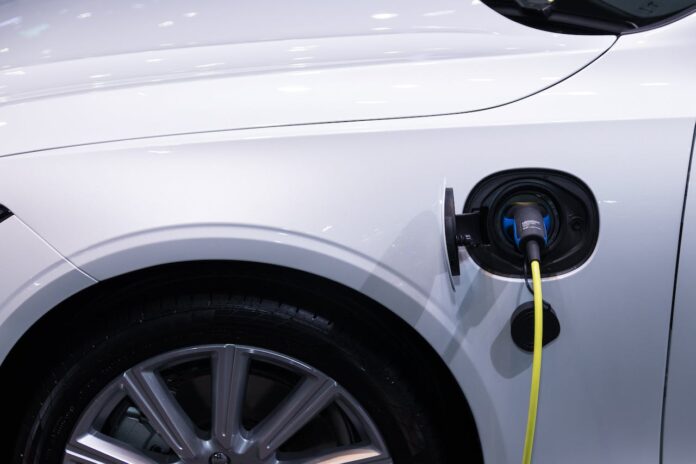In today’s fast-paced digital world, where smartphones, tablets, smartwatches, and an array of other devices have become integral parts of our daily lives, having a reliable and efficient charging solution is crucial. With a myriad of charging boxes available in the market, selecting the right one can be a daunting task. This comprehensive guide aims to simplify the process, providing you with insights into the key factors to consider when choosing a charging box or ladeboks for your devices.
1. Understanding Your Device’s Charging Requirements
Before diving into the world of charging boxes, it’s essential to understand the charging requirements of your devices. Different gadgets come with varying charging specifications, including voltage and amperage. Some devices support fast charging, while others may have specific charging protocols. Make a list of your devices and their charging specifications to ensure compatibility with the charging box you choose.
2. Types of Charging Boxes
There are various types of charging boxes available, catering to different needs and preferences. Understanding the distinctions between these types will help you make an informed decision:
a. Wall Chargers: These are compact chargers designed to be plugged directly into a wall outlet. They come with multiple USB ports, allowing you to charge multiple devices simultaneously. Wall chargers are convenient for home and office use.
b. Power Strips with USB Ports: If you need to charge multiple devices in one location, a power strip with built-in USB ports is a versatile option. It combines traditional power outlets with USB charging capabilities, reducing clutter and providing a centralized charging station.
c. Portable Chargers: Also known as power banks, these are ideal for on-the-go charging. Portable chargers come in various capacities, so choose one that suits your needs. Consider factors such as size, weight, and capacity when selecting a portable charger.
d. Wireless Chargers: With the rise of wireless charging technology, wireless chargers have become popular. These chargers use electromagnetic fields to transfer power to compatible devices. Ensure that your device supports wireless charging before opting for this type of charger.
3. Charging Speed and Technology
Charging speed is a critical factor to consider, especially if you’re always on the move. Different chargers come with varying charging speeds, and some support fast-charging technologies. Quick Charge, Power Delivery (PD), and Adaptive Fast Charging are examples of technologies that can significantly reduce charging times. Check if your devices are compatible with these technologies and choose a charging box that supports them for optimal performance.
4. Number of Ports and Compatibility
The number of charging ports on a box is crucial, especially if you have multiple devices. Consider how many devices you need to charge simultaneously and choose a charging box with an adequate number of ports. Additionally, ensure that the ports are compatible with your devices – whether they use USB-A, USB-C, or other charging connectors.
5. Safety Features
Safety should always be a top priority when selecting a charging box. Look for features such as overcurrent protection, overvoltage protection, short circuit protection, and temperature control. These features help prevent damage to your devices and enhance the overall safety of the charging process.
6. Build Quality and Durability
Investing in a high-quality charging box with durable construction is essential for long-term use. Consider the materials used, build quality, and the reputation of the manufacturer. A well-built charging box is more likely to withstand daily wear and tear, ensuring a reliable and safe charging experience.
7. Size and Portability
The size and portability of the charging box play a crucial role, especially if you travel frequently. A compact and lightweight design is essential for on-the-go charging. Portable chargers, in particular, should be easy to carry and fit comfortably in your bag or pocket.
8. Brand Reputation and Reviews
Researching the reputation of the brand and reading user reviews can provide valuable insights into the performance and reliability of a charging box. Opt for well-known brands with positive reviews to increase the likelihood of a satisfactory purchase.
9. Budget Considerations
While it’s tempting to go for the cheapest option, keep in mind that charging boxes are an investment in the safety and longevity of your devices. Set a reasonable budget based on your needs and prioritize features that align with your requirements. Balance affordability with quality to ensure a cost-effective and reliable charging solution.
10. Future-Proofing Your Charging Setup
As technology continues to evolve, it’s wise to future-proof your charging setup to some extent. Choose a charging box that supports the latest charging standards and technologies, ensuring compatibility with upcoming devices. This approach can save you from the need to upgrade your charging accessories frequently.
Conclusion
Selecting the right charging box for your devices requires careful consideration of your charging needs, device compatibility, safety features, and future-proofing. By understanding the types of charging boxes available and evaluating factors such as charging speed, number of ports, and build quality, you can make an informed decision that enhances the efficiency and safety of your device-charging routine. Remember, investing in a reliable charging solution is an investment in the longevity and optimal performance of your valuable devices.










